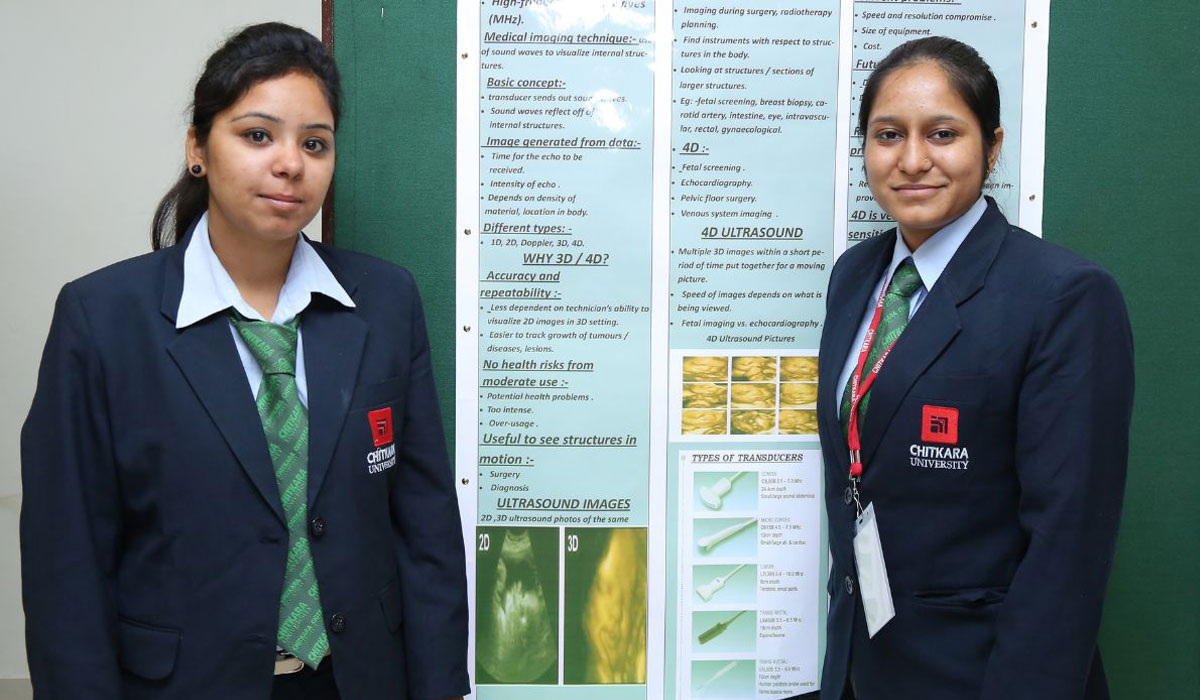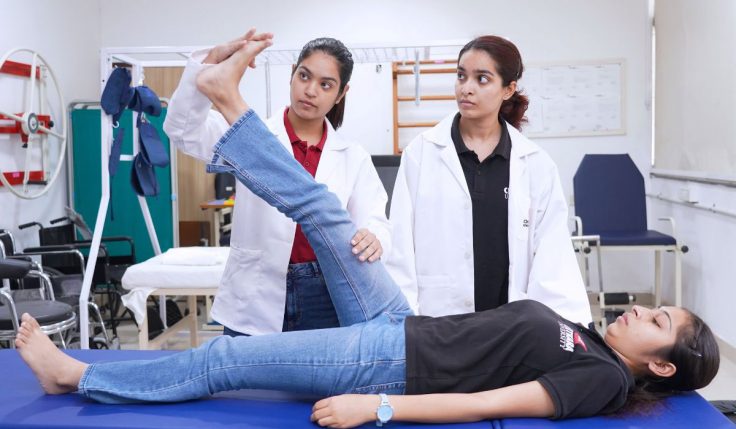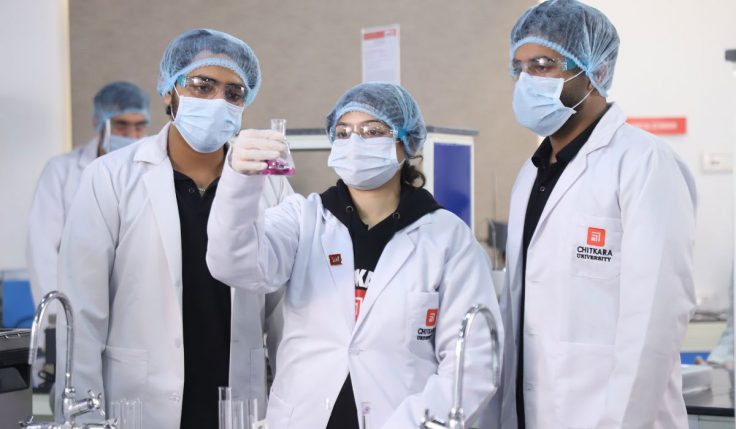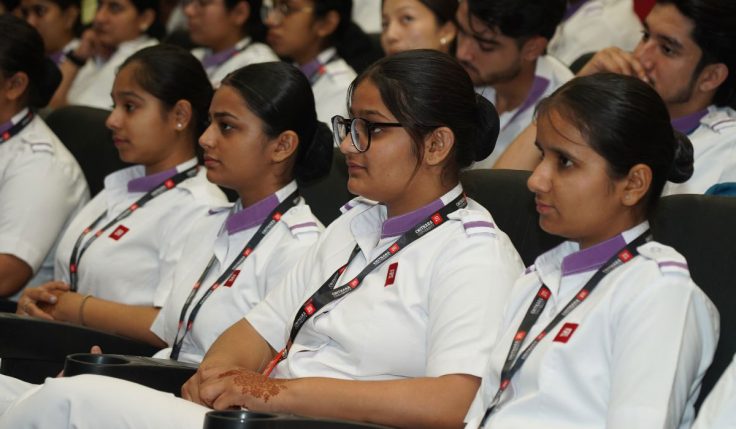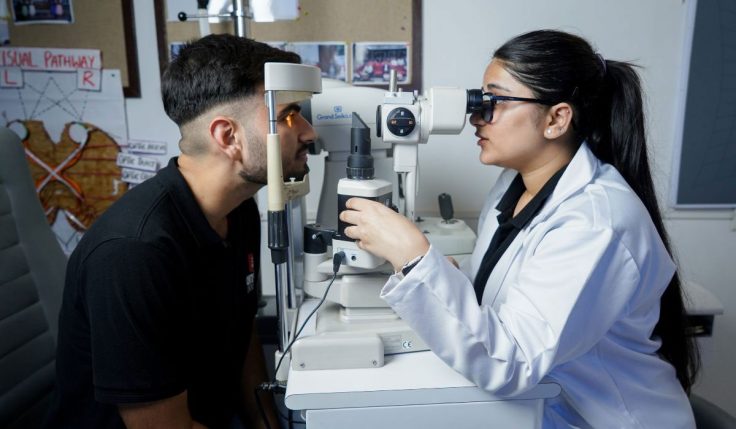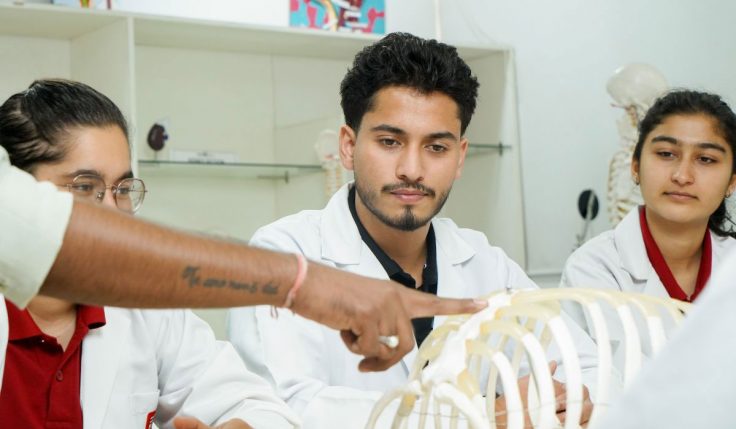If you want to work in the exciting field of Radiology and Medical Imaging, earning a B.Sc. in Medical Radiology and Imaging Technology (MRIT) is a great first step. As a Radiologic Technologist, you will play an important part in the healthcare industry by performing various diagnostic imaging examinations.
Let’s look at seven different sorts of diagnostic imaging examinations that you’ll be assisting with as a Radiologic Technologist.
X-Rays:
What are X-Rays?: X-rays are perhaps the most familiar diagnostic imaging tests. They employ electromagnetic radiation to create images of the inside of the body, focusing primarily on bones and soft tissues.
Your Role: As a Radiologic Technologist, your responsibilities include positioning patients with precision, adjusting imaging equipment settings, and ensuring stringent safety measures during X-ray procedures. You will also be responsible for capturing clear images while minimizing radiation exposure.
Computed Tomography (CT) Scans:
What are CT Scans?: CT scans offer detailed cross-sectional images of the body, allowing for the visualization of organs, blood vessels, and anomalies. They are invaluable for diagnosing a wide range of medical conditions.
Your Role: In the realm of CT scans, you will operate the CT scanner, ensuring patients are correctly positioned for optimal imaging. Additionally, you’ll manage the administration of contrast materials when necessary to enhance imaging quality.
Magnetic Resonance Imaging (MRI):
What is MRI?: MRI relies on powerful magnets and radio waves to create highly detailed images of soft tissues, organs, and the central nervous system, providing crucial insights into various medical conditions.
Your Role: Radiologic Technologists assist in patient preparation, ensuring they are comfortable and positioned accurately within the MRI machine. You’ll also monitor patients during the procedure and collaborate closely with physicians to interpret the resulting images.
Ultrasound:
What is Ultrasound?: Ultrasound imaging employs high-frequency sound waves to generate real-time images of internal organs, developing fetuses, and blood flow. It is a non-invasive and safe diagnostic tool.
Your Role: As an Ultrasound Technologist, you will operate ultrasound equipment, positioning the transducer (the device that emits and receives sound waves) on the patient’s body to capture images. You’ll also assist physicians in interpreting the obtained images.
Nuclear Medicine Imaging:
What is Nuclear Medicine?: Nuclear medicine involves the use of radioactive substances to diagnose and treat diseases. This imaging modality is particularly valuable for visualizing various organs, including the heart, thyroid, and bones.
Your Role: Radiologic Technologists working in nuclear medicine play a crucial role in administering radioactive materials to patients safely. You will also perform scans and ensure strict adherence to radiation safety protocols.
Fluoroscopy:
What is Fluoroscopy?: Fluoroscopy is a real-time imaging technique that utilizes X-rays to visualize moving organs or structures within the body, such as the digestive system or joints.
Your Role: When working with fluoroscopy, you will operate specialized equipment and collaborate closely with physicians during procedures. Your role is pivotal in ensuring that real-time images are captured accurately and effectively.
Mammography:
What is Mammography?: Mammography is a specialized form of X-ray imaging focused on breast tissue. It plays a critical role in breast cancer screening and diagnosis.
Your Role: Radiologic Technologists in mammography excel at positioning and imaging breast tissue for mammograms. Their expertise ensures both the quality of the images and patient comfort during the procedure.
Becoming a Radiologic Technologist in the discipline of Medical Radiology and Imaging Technology (MRIT) necessitates a broad skill set that includes technical expertise, medical understanding, and great patient care abilities. Students seeking a B.Sc. in MRIT get intensive training in operating imaging equipment, patient care practices, radiation safety, and in-depth understanding of human anatomy in order to flourish in this area.
Clinical rotations provide valuable hands-on experience as part of your education. This hands-on training guarantees that you are capable of aiding with a variety of diagnostic imaging examinations while under the supervision of seasoned specialists.
Read this blog post: How Technology is Transforming Radiology & Imaging: A Look Ahead
Finally, a career as a Radiologic Technologist provides a dynamic and extremely gratifying route within Radiology and Medical Imaging. It is a career that contributes considerably to healthcare by assisting in correct diagnosis and improving patient care. If you are interested in technology, medicine, and making a difference in the lives of patients, then pursuing a B.Sc. in MRIT and becoming a Radiologic Technologist may be the right path for you. Your path in this sector will provide you with interesting prospects and the ability to play an important part in the world of healthcare.
The B.Sc. in Medical Radiology and Imaging Technology (MRIT) program at Chitkara University is a four-year program aimed to provide students with the skills and information required for a satisfying career in healthcare. This program, which places a heavy focus on both classroom and clinical instruction, allows students to get practical experience through a year-long internship with Fortis Healthcare Network. Graduates are guaranteed employment at top hospitals, diagnostic centers, and medical equipment firms.
The curriculum covers essential topics such as anatomy, medical imaging, radiographic techniques, and more, while hands-on training in X-rays, CT scans, MRIs, and interventional procedures ensures students are well-prepared for their future roles as Radiologic Technologists.
Chitkara University’s MRIT program is distinguished by its industry-endorsed curriculum, skilled teachers, and extensive practical training in cutting-edge labs. Thanks to a robust network of top recruiters, graduates may look forward to potential job opportunities as Radiographers, CT Techs, MRI Techs, and more. This degree serves as a springboard to a rewarding career in the dynamic field of medical radiology and imaging technology, where graduates play a critical role in delivering critical diagnostic insights for healthcare. If you want to shape your career in healthcare, Chitkara University’s MRIT program is a great place to start.
